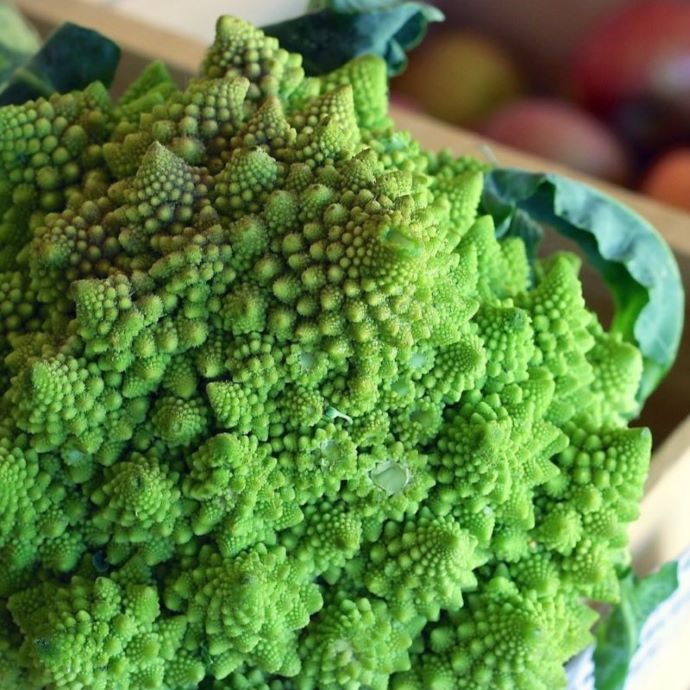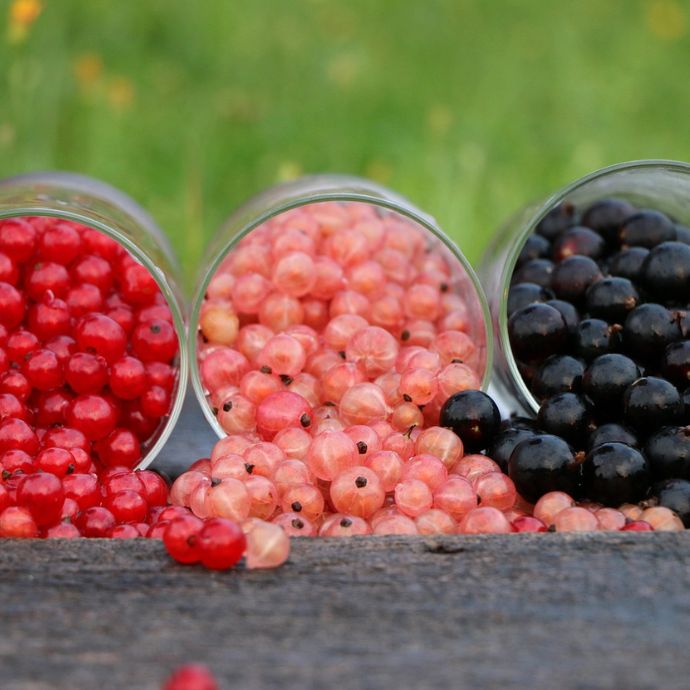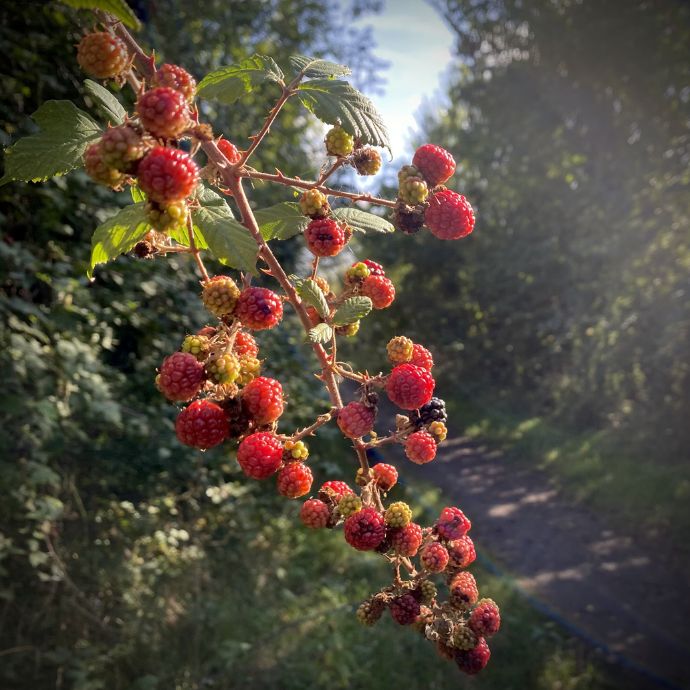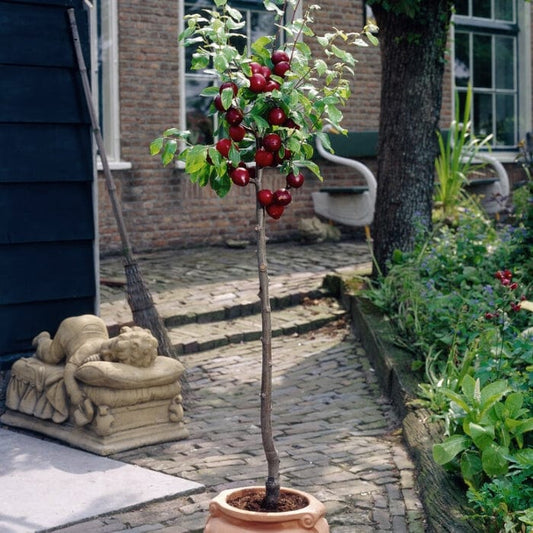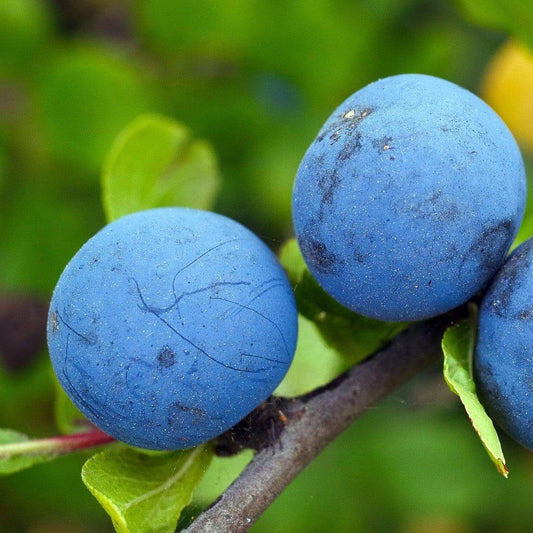How to Train a Victoria Plum
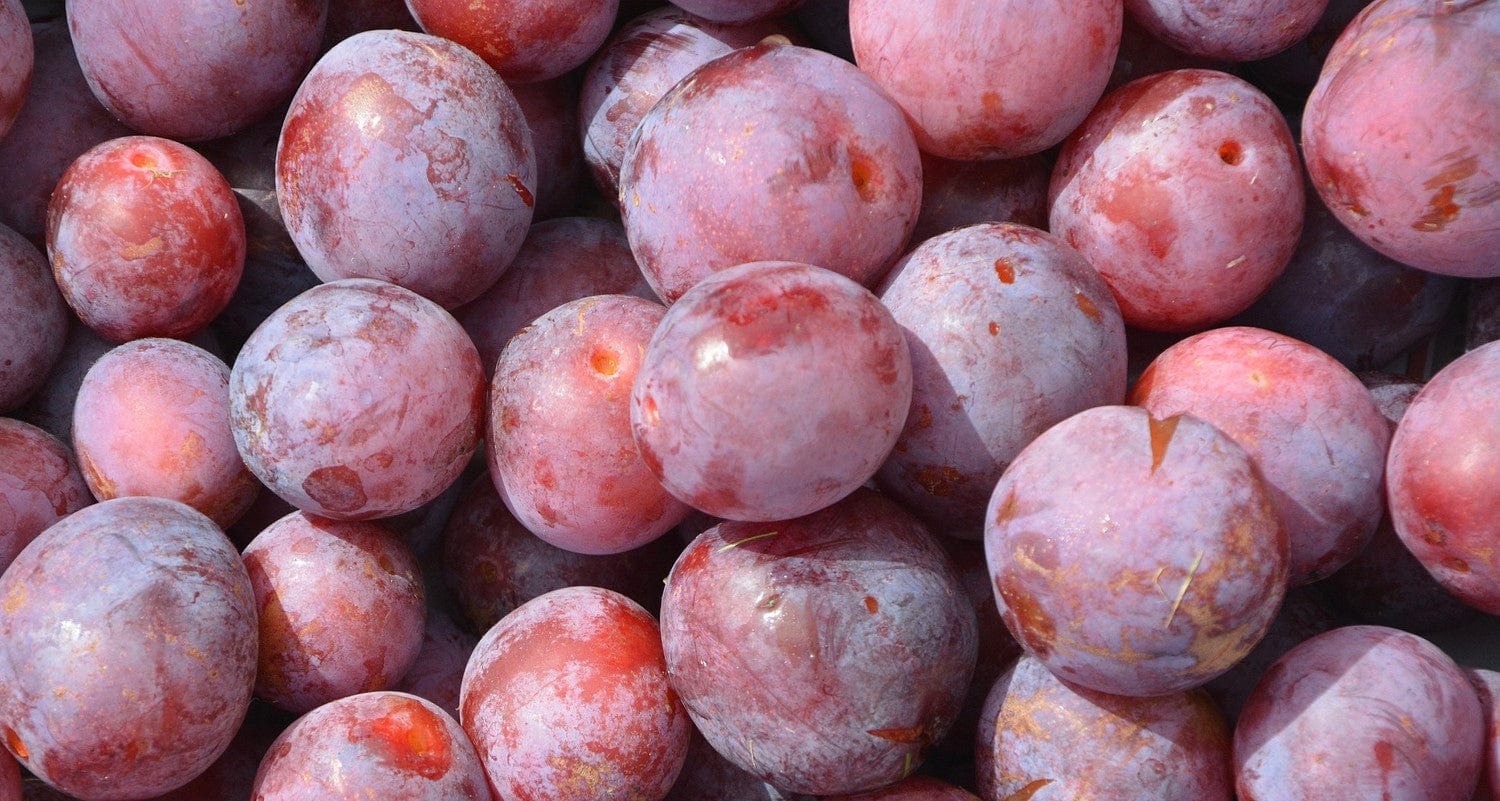
A common problem with plum trees is that if they’re left to their own devices, they can grow so large you might need a ladder to pick your crop. While this is great if you have the space (and aren’t afraid of heights), you might want to consider a more compact way of growing plums - enter cordon trees! Cordons are the perfect way to grow a heavy crop of plums in a small space - here we show you how.
Where should I position a cordon?
Firstly, decide if you want to grow your Victoria Plum cordon against a fence, a wall or as freestanding. In each case, choose a sunny, sheltered spot where your Victoria plum tree will receive at least 6 hours of sunlight daily in spring and summer. If you’re planning to plant more than one tree, space them 60-90cm apart.
Which other Plum Trees are suitable?
Cordon training is suitable for Plum Trees on a Pixy or VVA-1 dwarfing rootstock, including: Victoria Plum, Opal Plum, Czar and Early Laxton varieties.
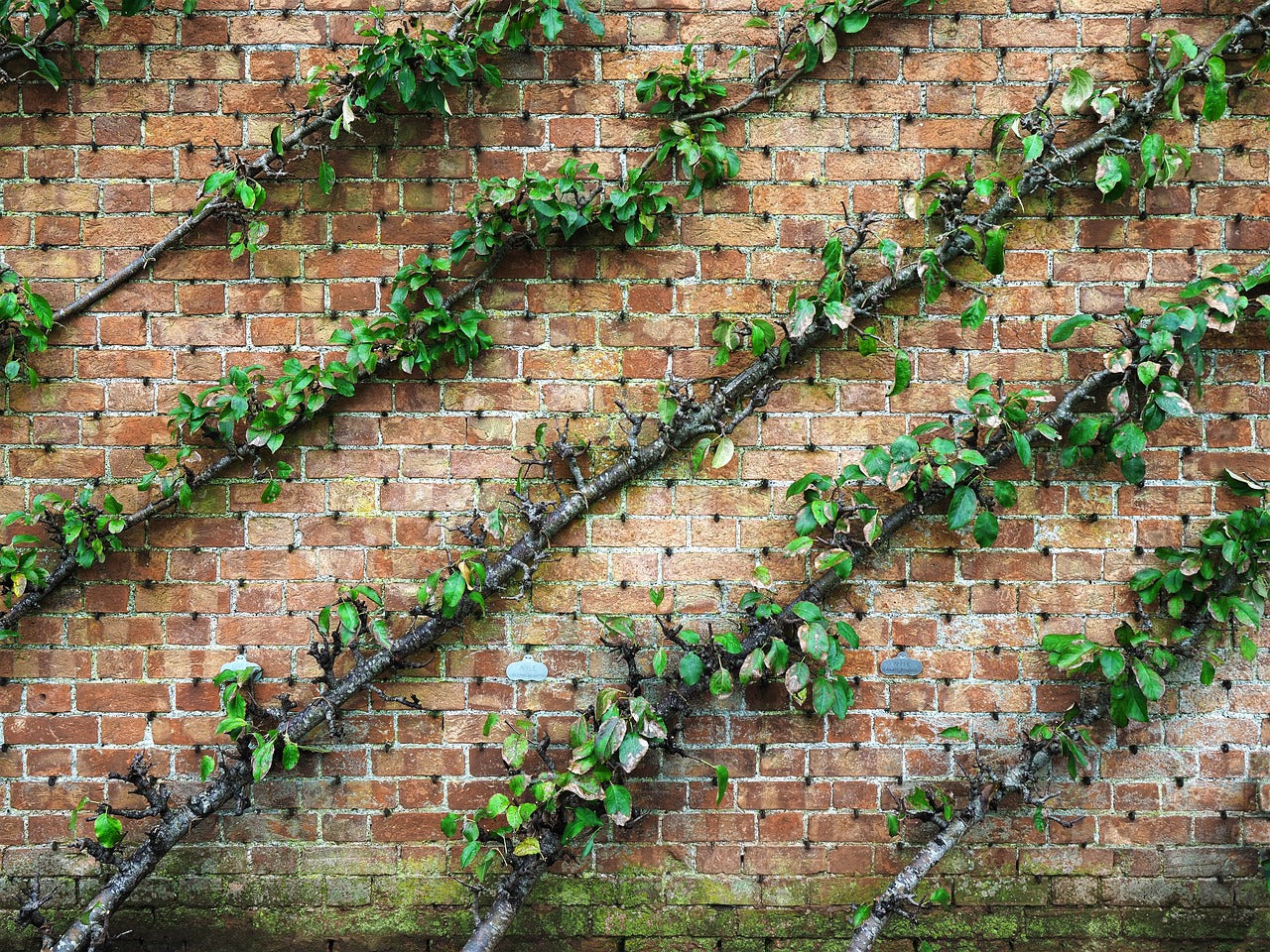
Initial planting and training your cordon
- WHEN TO PLANT
It’s best to start with a bare root tree, but potted is fine. The easiest time to start is in early spring before the tree has put on too much foliage or formed blossom.
- BUILDING A FRAMEWORK (WALL / FENCE)
If you’re growing one or more cordons on a wall or fence, you’ll need to build a framework of horizontal supporting wires from the bottom to the top of the wall, at around 35cm apart. Allow 60-90cm width of wire for each cordon. If you’re growing your cordons against a fence, you can fix the wires between posts using eye bolts. If you’re using a wall, we’d suggest vine eyes and a tightener to make sure the structure is strong enough.
- FREESTANDING CORDON
For these, you will need to use a long, sturdy support cane for each tree. We recommend bamboo canes of around 2.4m in height.
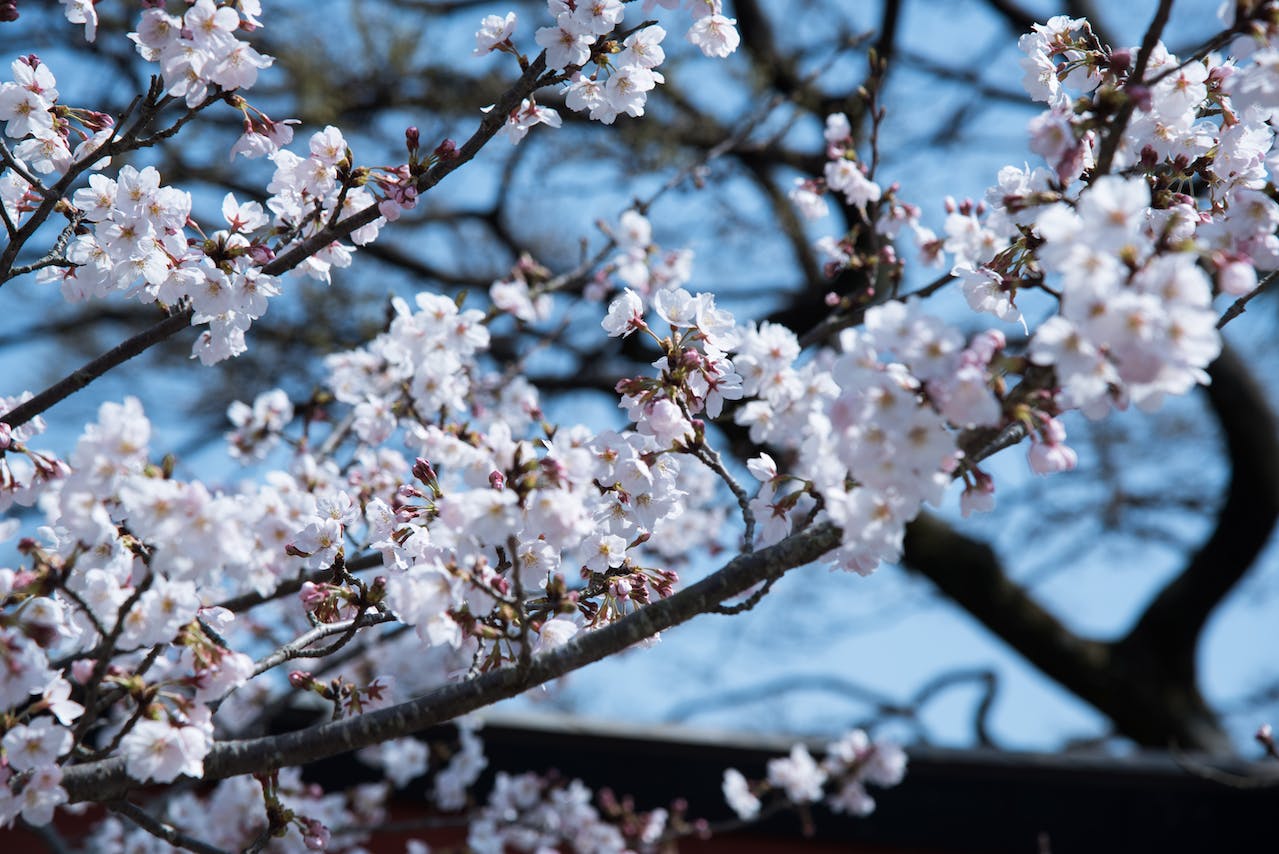
- PLANTING STEP-BY-STEP
If your tree is bare root, soak the roots in a bucket of water for about an hour before planting. For both angled and freestanding cordons, most parts of the planting process are the same.
Step 1: Dig a hole 15cm away from the fence, large enough to cover all the roots.
Step 2: Add some gravel or broken crockery to the hole to help with drainage, and a sprinkling of rootgrow if you have it.
Step 3: Position the tree centrally in the hole and backfill with a mixture of compost and the extracted soil.
Step 4: Firm it in and water well.
- INITITAL TRAINING
To plant cordon trees at an angle on your wall, tie in a long bamboo cane (one for each tree) to your support wires at about 45 degrees. Make sure that the scion (the part of the wood above the graft line) is above the ground and pointing upwards, to avoid the tree breaking. Plant your trees about 15cm from the wall and 60-90cm apart, tying them in firmly to the bamboo canes.
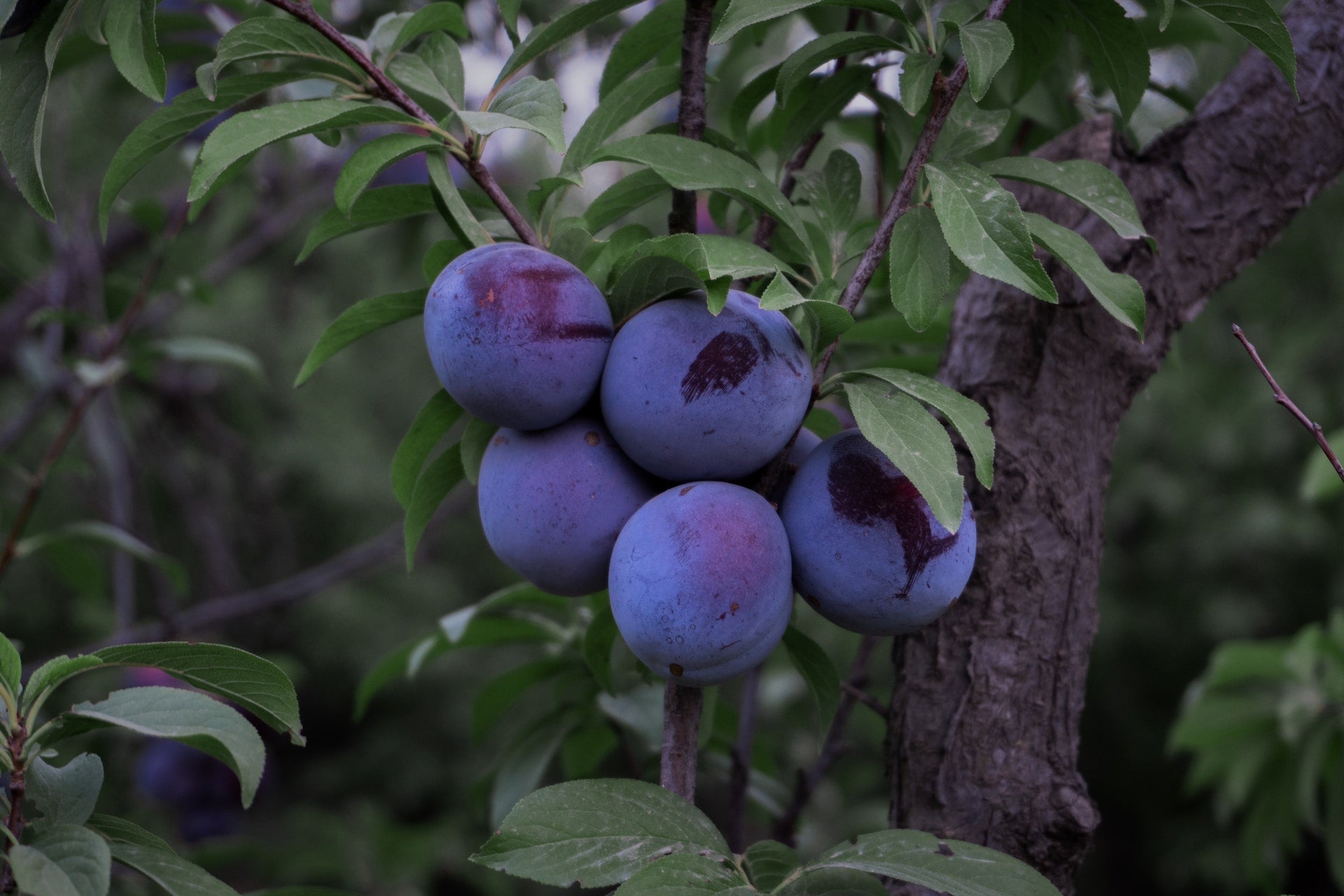
Pruning an established cordon
Once your cordon tree is established, your pruning routine will be the same each year.
Cordons are pruned in August or early September - this is because as autumn approaches, the tree’s sap levels fall. In spring, the tree uses that sap to grow branches, so what you want to do here is remove that excess wood before it gets the chance - making it concentrate all its energy on producing flower buds instead, which lead to fruit.
Cut any side shoots that are over 23cm long, back to three leaves from where the current season’s growth starts. When the cordon has reached the top wire (if growing on a wall or fence) prune the leading shoot back to a leaf joint at the height you want. If you’re growing a freestanding cordon, prune the leading shoot to the maximum height you can comfortably pick from. Thin the fruit to one per cluster to maximise size and quality.
Short on time?
If you found this guide useful, you might also like
Last updated: 06/03/2025



